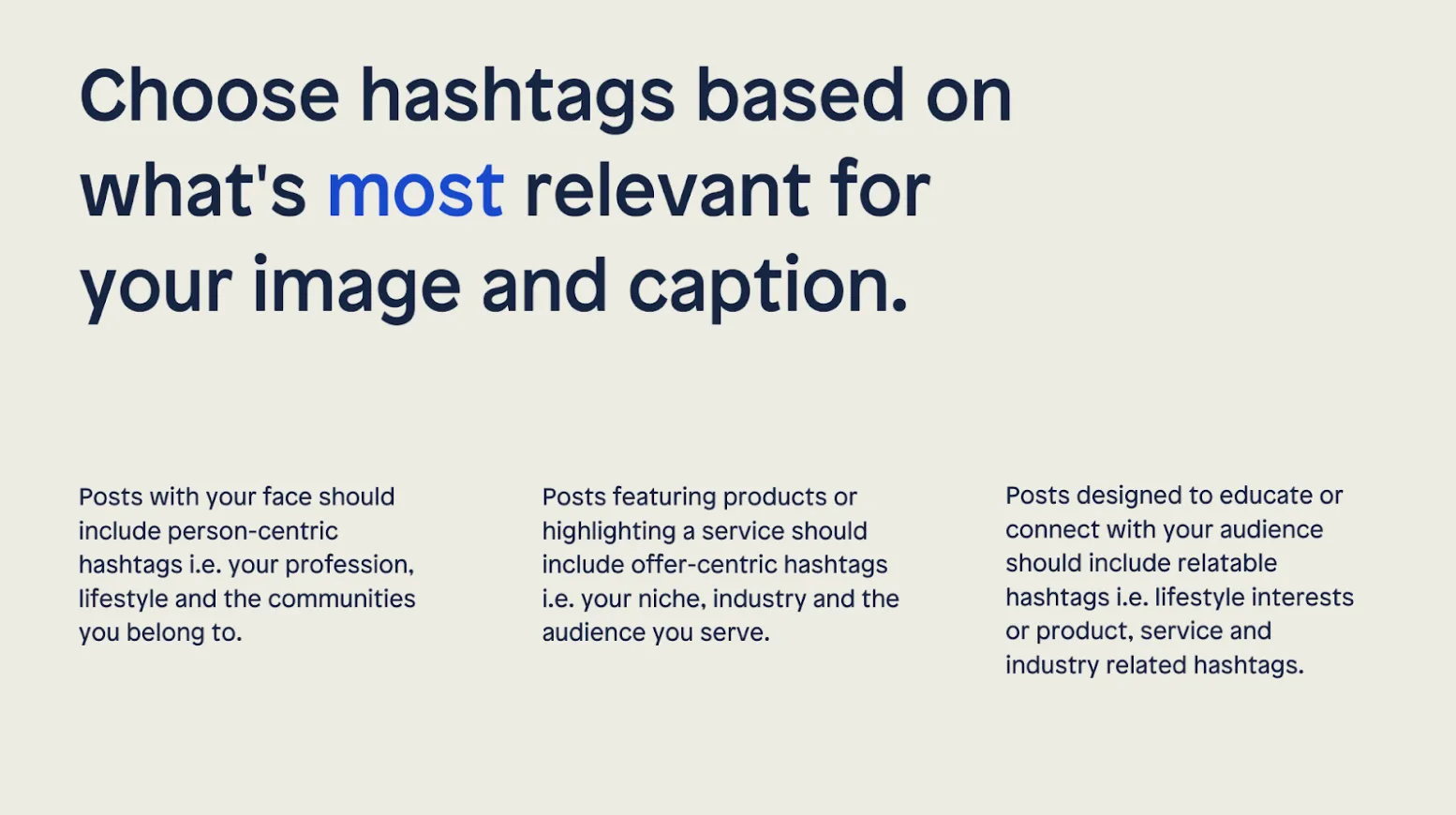Top tips on hashtag strategies for entrepreneurs
BY SHARON HADDEN, FOUNDER, CONTENT PLANNING COMPANY
JANUARY 15, 2021
Looking for the right hashtags is a lot like trying to perfect a new recipe. The more you experiment, the more informed you become on the various combinations resulting in a delicious dish. Hashtags can be applied in a similar way. There are an endless number of tags you can use, but you quickly learn that some are better suited to your content than others.
While there’s no one-size fits all hashtag strategy for entrepreneurs, there are three key areas to pay close attention to: how hashtags fit into your social media strategy; identifying targeted and relevant hashtags for your business; and measuring hashtag performance.
How Hashtags Fit Into Your Social Media Strategy
Studies have shown that Instagram posts with at least one hashtag receive 12% higher engagement, with the ideal number of hashtags per post being 8 - 14. Helpful information in theory, but in practice, it’s important to first understand how hashtags fit into your social media strategy.
Hashtags can help you increase brand awareness, connect with your ideal audience, engage with niche communities and boost post engagement. Once you identify what success looks like for your content, you can decide on the hashtag categories that work best for your specific posts.
For example, if success is increasing brand awareness for your business, using hashtags that describe your industry, product, service or profession would be better suited to get the results you’re looking for, than hashtags about trending holidays. And if your business is location dependent, you’d want to include location-specific hashtags, so you’re increasing awareness within the area you serve.
Hashtags fit into your social media strategy by helping you get discovered and stay connected to your online community. Understanding the community you want to reach and the ways in which you plan to reach them is key to crafting an effective hashtag strategy.
Identifying Targeted and Relevant Hashtags
When you post on social media, the algorithm gauges its relevance compared to posts with similar content and posts using similar tags. It also gauges how your post ranks against content users have shown the most interest in within that category i.e. top posts.
The Hashtag Strategies for Success on Social Media webinar in the IFW workshop library walks entrepreneurs through how to curate customized hashtag groups that save you time, while keeping hashtags highly relevant to the content of your posts.
A key takeaway from the workshop is to identify a list of hashtags that are person-centric, offer-focused and audience oriented, and then mix and match these tags depending on your content. Since the algorithm uses machine learning to filter, sort and serve up relevant content, choosing hashtags based on what’s most relevant to your image and caption increases your chances of ranking as a top post.

Measuring Hashtag Performance
A hashtag strategy is just like any other marketing activity. Once you document your plan, measuring hashtag performance should be a regular part of your social media routine.
Instagram post insights can show you how many accounts you reached from hashtags per post, and this is a good starting point to understand the effectiveness of your current hashtags.
For a more in-depth analysis of specific hashtags, use a tool like SmartHash or Hashtagify to automatically test and track hashtag performance. Social media scheduling tools like Later and Buffer also have built-in hashtag analytics.
Regardless of the tools you use to measure hashtag performance, treating hashtags as if they were SEO keywords is a more sustainable strategy than trial and error testing and observation.
Start by identifying the top hashtags you want to rank for and closely monitor the content being shared and how your content performs in this select group. Similar to SEO keywords, this is your list of 5 - 10 niche hashtags that have the greatest potential to impact your growth and success on social media. For example, if you’re a business coach focused on working with female founders, #coachforwomen might be a priority hashtag to use in your posts.
Instead of using #coachforwomen on every post you share, be strategic and use it on posts that are the most relevant to that topic area. On Instagram, top posts under #coachforwomen are photos that prominently feature the coach’s face, so ideally, you’d want to use this hashtag on posts about you as a coach for the best results.
Instagram’s latest update to the Explore tab now allows users to search by keyword, not just by hashtag or account name—just like a traditional search engine. Before, if you wanted to find content featuring outfit ideas, you’d only see posts tagged with #outfitideas or accounts using some variation of “outfit ideas'' in their account name. Now, the algorithm will search the keyword “outfit ideas'' and serve up relevant content even if the post doesn’t have a specific tag.
This update is only available in select English speaking countries, and it’s important to note that not all phrases have keyword search enabled. If keyword search is available on your account, you’ll see a magnifying glass next to the phrase you searched with additional keyword suggestions below your primary keyword.
Relevance has always been a core component of how content is ranked, but you can expect the Instagram keyword search update to greatly impact your content strategy moving forward. By using hashtags based on relevance rather than popularity, you can strengthen the effectiveness of your hashtag strategy and work with the algorithm rather than against it.
For more top tips on hashtag strategies for entrepreneurs, and other workshops on important business and fundraising topics, visit the IFW workshop library.
Sharon L. Hadden is the founder of Content Planning Company, a marketing education and coaching business focused on teaching women entrepreneurs how to save time and money on content creation.